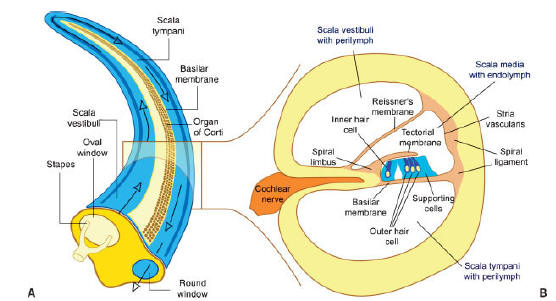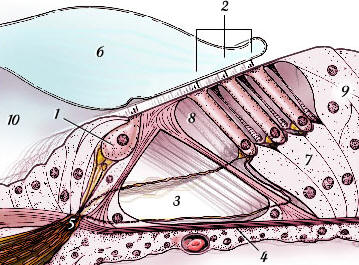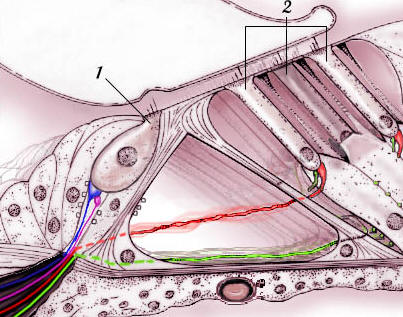Auditory nerve fibers also play an important role in auditory pathway. They provide synaptic connections between the hair cells of the cochlea and the cochlear nucleus within the brainstem. The cell bodies of the cochlear nerve lie within the central aspect of the cochlea and are collectively known as the spiral ganglion. This name reflects the fact that the cell bodies, considered as a unit, has a spiral shape.
Type I neurons make up 90-95% of the neurons and innervate the inner hair cells. They have relatively large diameter, and are bipolar and myelinated. Each type I axon innervates only a single hair cell, but each hair cell directs its output to an average of 10 nerve fibers. Type II neurons, which ahve a relatively small diameter, connect with the outer hair cells, are monopolar and are not myelinated.
The transmission between the inner hair cells and the neurons is chemical, using glutamate as a neurotransmitter.


